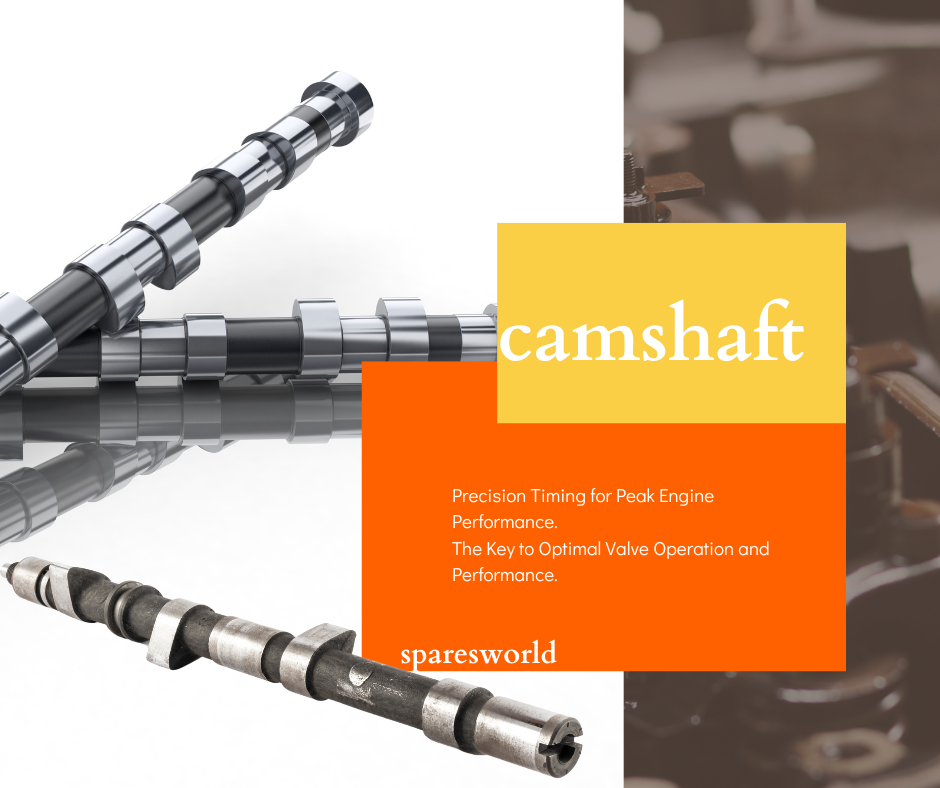Exploring the Functions of Camshafts in Engines

Uncover the pivotal role camshafts play in the heart of your engine’s performance;
Understanding Camshafts: Core Concepts and Design
Camshafts are integral components in internal combustion engines, responsible for controlling the timing and operation of the engine's valves. The camshaft features a series of cam lobes that push against the valves to open and close them at precise intervals, allowing for the intake of air and fuel and the expulsion of exhaust gases.
Designed with precision, camshafts must withstand immense pressure and friction. They are typically constructed from high-strength materials such as cast iron or steel, and their design can vary significantly depending on the engine's requirements. The shape and configuration of the cam lobes are meticulously engineered to ensure optimal engine performance and efficiency.
How Camshafts Influence Engine Performance
The performance of an engine is heavily influenced by the camshaft's design and operation. By controlling the opening and closing of the valves, the camshaft directly affects the engine's air-fuel mixture, combustion process, and exhaust flow. This, in turn, impacts the engine's power output, fuel efficiency, and overall running characteristics.
A well-designed camshaft can enhance an engine's performance by optimizing valve timing to maximize air and fuel intake while minimizing exhaust backpressure. This delicate balance is crucial for achieving high horsepower, torque, and efficient fuel consumption. Conversely, a poorly designed camshaft can lead to suboptimal engine performance, reduced fuel efficiency, and increased emissions.
The Interplay Between Camshaft Timing and Engine Efficiency
Camshaft timing, also known as valve timing, is a critical factor in engine efficiency. The timing of the camshaft must be synchronized with the engine's crankshaft to ensure that the valves open and close at the correct moments during the engine's cycle. This synchronization is typically achieved through the use of timing belts, chains, or gears.
Adjusting camshaft timing can significantly influence engine performance. Advanced timing can lead to increased power and higher RPMs, while retarded timing can improve low-end torque and fuel efficiency. Variable valve timing (VVT) systems have been developed to dynamically adjust camshaft timing based on driving conditions, further enhancing engine performance and efficiency.
Advancements in Camshaft Technology: Materials and Manufacturing
Camshaft technology has evolved significantly over the years, driven by advancements in materials and manufacturing techniques. Modern camshafts are often made from advanced alloys and composites that offer superior strength, durability, and resistance to wear and heat.
Innovative manufacturing processes, such as computer-aided design (CAD) and precision machining, have enabled the production of highly accurate and efficient camshafts. Additionally, surface treatments and coatings, such as nitriding and parkerizing, are used to enhance the camshaft's performance and longevity. These technological advancements have contributed to the development of more powerful, efficient, and reliable engines.
Choosing the Right Camshaft: Considerations for Optimal Engine Function
Selecting the right camshaft for an engine involves careful consideration of various factors, including the engine's intended use, performance goals, and compatibility with other engine components. Key considerations include the camshaft's lift, duration, and lobe separation angle, all of which affect valve timing and engine performance.
For performance-oriented applications, a camshaft with higher lift and longer duration may be chosen to maximize airflow and power output. In contrast, for daily driving or fuel efficiency, a camshaft with milder specifications may be more appropriate. It's also essential to ensure that the chosen camshaft is compatible with the engine's valvetrain components, such as valve springs, lifters, and rocker arms, to prevent mechanical issues and achieve optimal performance.

 Loading..
Loading..